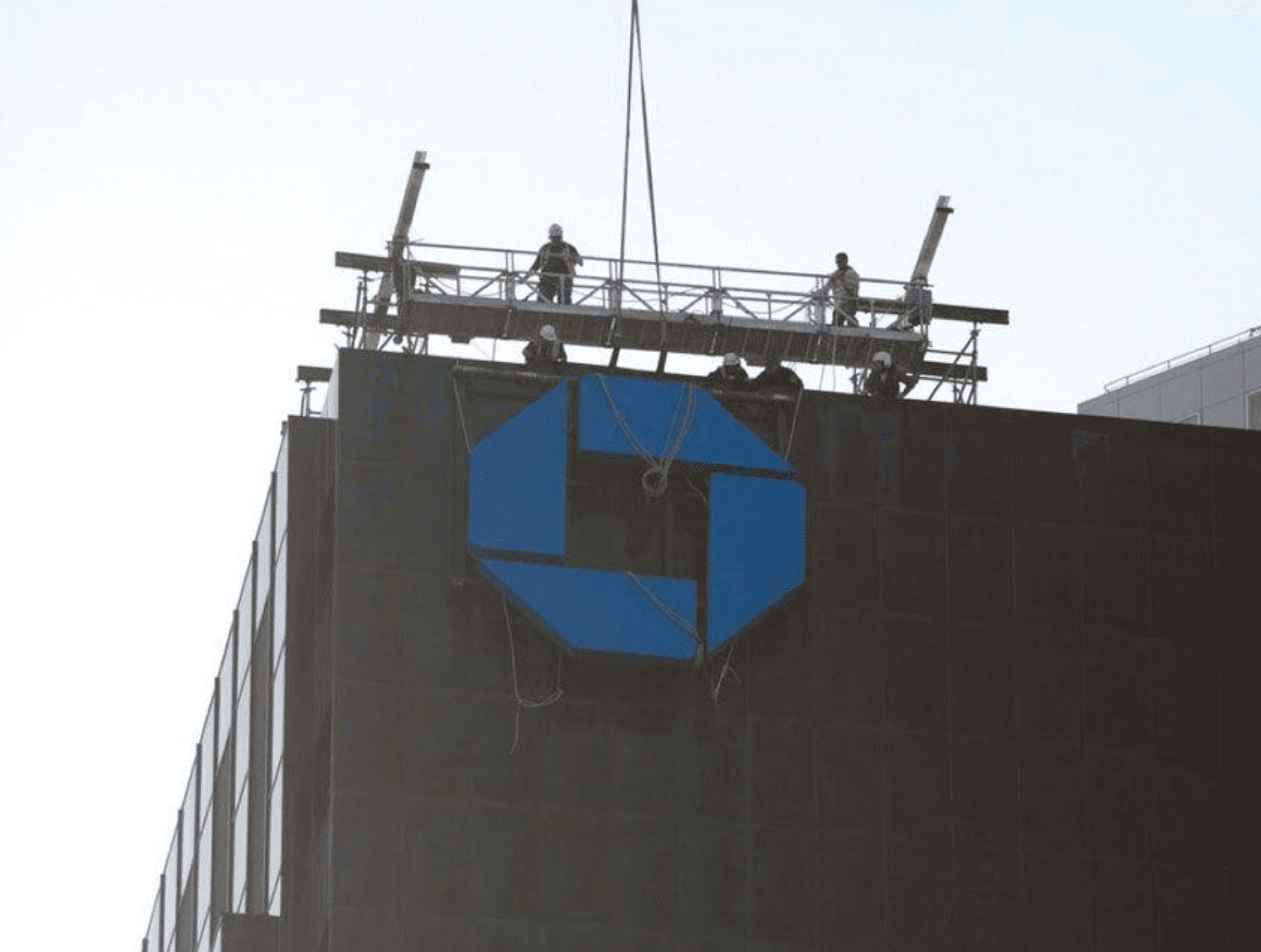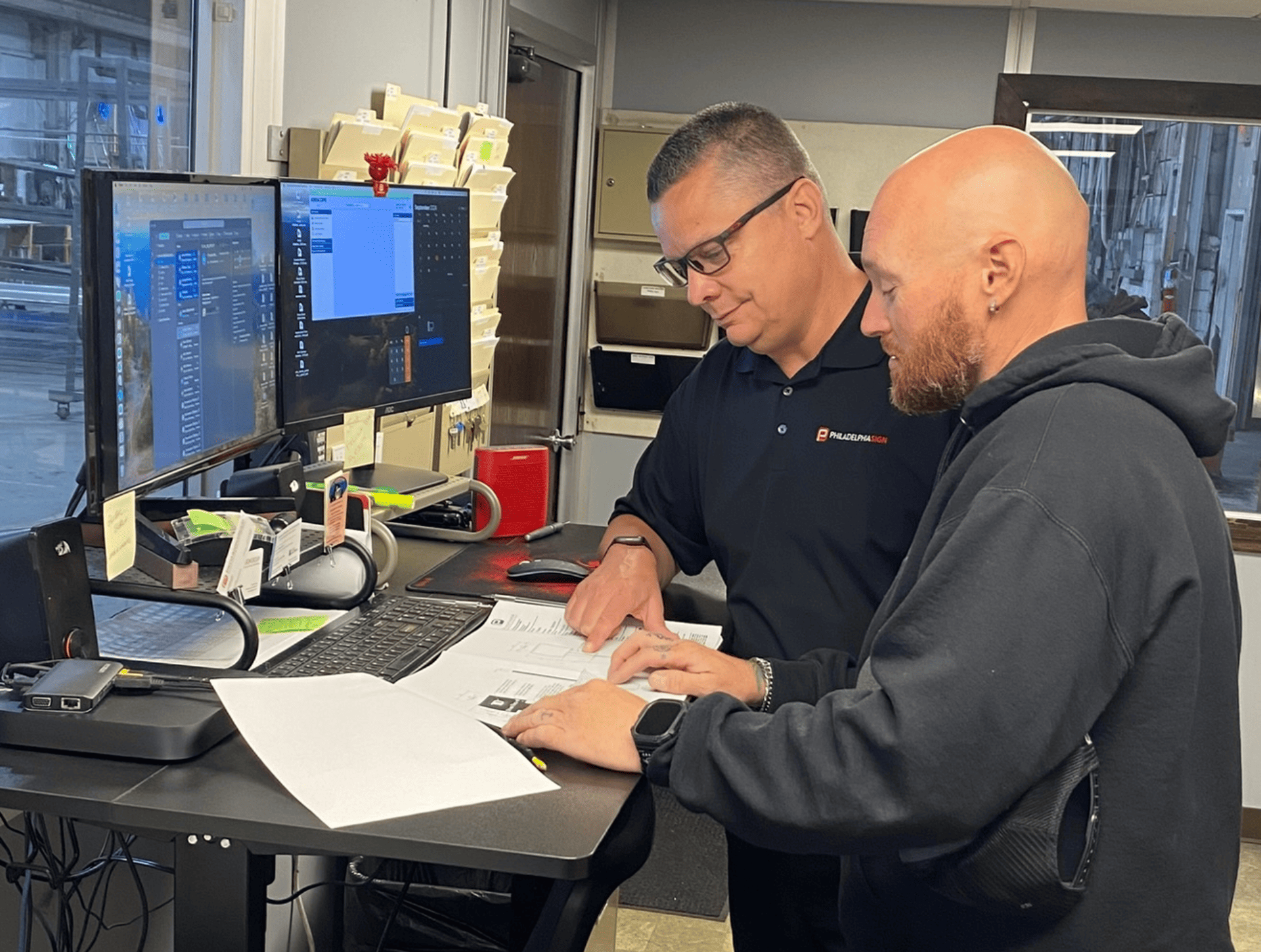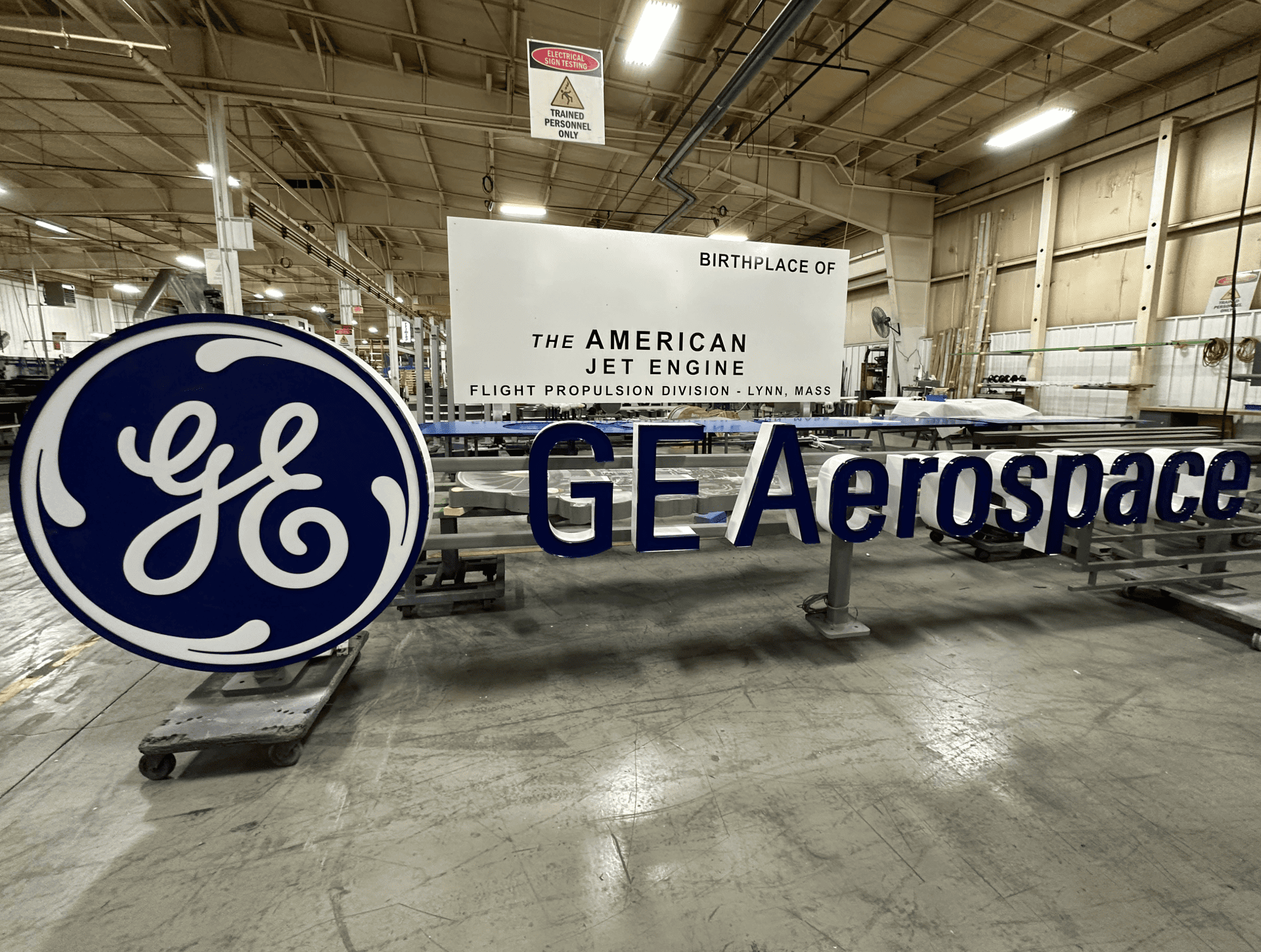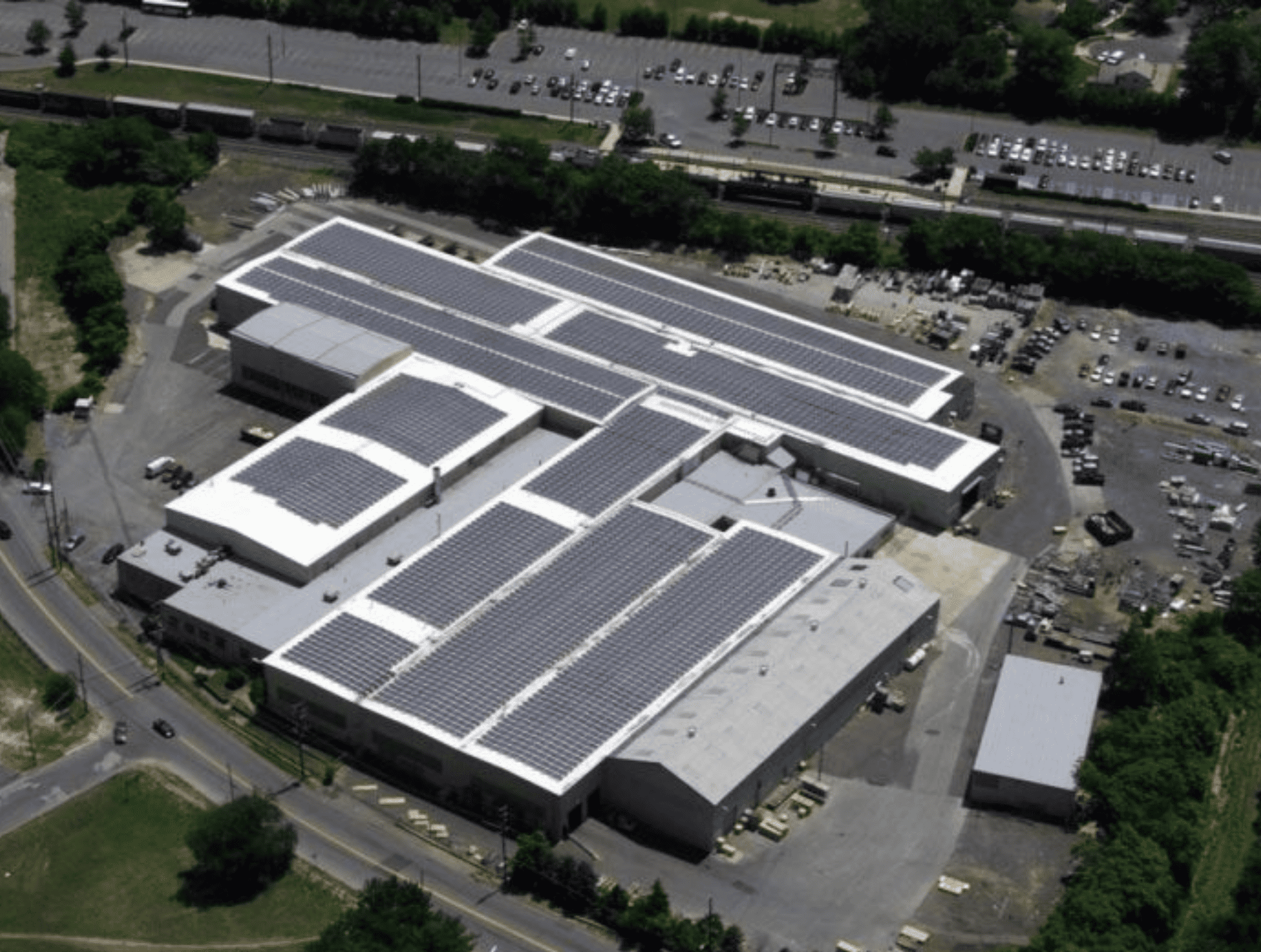7 Tips for Navigating Nationwide Brand Signage
Managing a nationwide brand signage rollout requires strategic coordination across multiple jurisdictions, stakeholders, and technical requirements. The most effective approach involves selecting a comprehensive signage partner, like PSCO Sign Group, with national reach, implementing standardized processes for brand consistency, and ensuring compliance with diverse local regulations. Success depends on early strategic planning, streamlined project management, and leveraging both traditional and digital signage technologies to create cohesive brand experiences across all locations.
Coordinated signage programs deliver measurable business impact. The complexity of multi-location rollouts requires expertise in navigating evolving regulations, implementing sustainable fabrication practices, and integrating advanced digital technologies.
1. Develop a Comprehensive National Signage Strategy
A well‑defined national signage strategy serves as the foundation for successful multi‑location rollouts, ensuring brand consistency while accommodating local market variations. This strategic framework must address unified brand standards, regulatory compliance requirements, and scalable deployment processes before any fabrication begins.
Essential strategy components include:
- Brand audit and standardization – Document existing signage variations and establish unified design templates
- Regulatory research – Identify permitting requirements across target markets and jurisdictions
- Prototype development – Create standardized designs with built‑in flexibility for local adaptations
- Timeline and phasing – Establish realistic rollout schedules considering permitting and installation logistics
- Budget allocation – Plan for variations in costs across different markets and property types
The strategy should include pre‑approved design variations that maintain brand integrity while addressing common local requirements such as size restrictions, mounting limitations, or architectural guidelines. This proactive approach prevents costly redesigns and delays during the rollout phase.
Scalability assessment criteria:
- Manufacturing capacity for projected volume
- Installation network coverage across target markets
- Permitting expertise in relevant jurisdictions
- Ongoing maintenance and support capabilities
Partnering with experienced providers like PSCO Sign Group ensures your strategy incorporates realistic timelines, compliance requirements, and proven processes that have delivered successful outcomes for national brands across diverse market conditions.
2. Choose Scalable Signage Providers with Nationwide Reach
Selecting the right signage partner is critical for multi‑location success, requiring providers with comprehensive resources, expertise, and processes to manage rollouts efficiently across diverse geographies. A scalable signage provider must demonstrate capability to handle projects ranging from 10 to 1,000+ locations while maintaining consistent quality and service standards.
Core evaluation criteria:
| Capability | Requirements | PSCO Advantage |
|---|---|---|
| Manufacturing Scale | In‑house fabrication with capacity for large orders | Multiple UL‑certified facilities nationwide |
| Geographic Coverage | Installation network across all target markets | National installation and service network |
| Permitting Expertise | Proven experience with multi‑jurisdictional compliance | Dedicated permitting specialists |
| Project Management | Centralized tracking and communication systems | Proprietary project management platform |
| Quality Standards | Consistent fabrication and installation protocols | UL certification and standardized processes |
In‑house capabilities provide distinct advantages:
- Quality control – Direct oversight of manufacturing processes and materials
- Timeline reliability – No dependence on external fabrication bottlenecks
- Cost predictability – Transparent pricing without multiple vendor markups
- Single accountability – One point of contact for all project phases
Regional expertise requirements:
- Local code knowledge and regulatory relationships
- Established installer networks with proven performance
- Market‑specific experience with property types and landlord requirements
- Ongoing service capabilities for maintenance and updates
Providers with national reach but regional expertise, like PSCO Sign Group, offer the ideal combination of scale and local market knowledge necessary for complex multi‑site deployments.

3. Implement Streamlined Project Management and Communication
Effective project management and transparent communication are essential for coordinating complex nationwide signage rollouts, reducing project risk while ensuring stakeholder alignment throughout the deployment process. Centralized tracking systems and clearly defined communication protocols prevent costly delays and miscommunications across multiple markets.
Essential project management components:
- Centralized dashboard – Real‑time visibility into project status across all locations
- Standardized workflows – Consistent processes for design approval, permitting, and installation
- Regular reporting – Scheduled updates on progress, challenges, and timeline adjustments
- Escalation procedures – Clear protocols for addressing issues and decision‑making
Modern project management technology enables tracking of permits, installation schedules, and compliance requirements across multiple jurisdictions. These platforms provide transparency for all stakeholders while providing efficient communications and status updates.
Communication best practices:
- Weekly project calls with standardized agenda and action items
- Milestone‑based reporting aligned with key project phases
- Issue escalation matrix defining response times and resolution pathways
- Stakeholder‑specific updates tailored to different audience needs
PSCO’s collaborative approach includes dedicated project managers who serve as single points of contact, ensuring consistent communication and accountability across all project phases. Our proprietary project management teams provide clients with real‑time visibility into project progress while maintaining detailed documentation for compliance and reporting purposes.
Risk mitigation through communication:
- Early identification of potential delays or challenges
- Proactive coordination with local authorities and property managers
- Transparent budget tracking and change order management
- Clear documentation for warranty and maintenance purposes
PSCO’s collaborative approach includes dedicated project managers who serve as single points of contact, ensuring consistent communication and accountability across all project phases.

4. Ensure Compliance with Local Signage Codes and Permitting
Navigating diverse local signage codes and permitting requirements represents one of the most complex aspects of nationwide rollouts, requiring specialized expertise and systematic processes to ensure compliance across multiple jurisdictions. Each municipality maintains unique ordinances governing signage size, placement, illumination, and materials, making compliance management a critical success factor.
Permitting fundamentals:
Permitting is the process of securing official approval for signage installations, considering city, state, and landlord‑specific codes that govern every aspect of signage design and placement. Requirements vary significantly by jurisdiction and can include zoning compliance, structural engineering reviews, environmental assessments, architectural design review board approvals, and even specific requirements on how application payments are accepted.
Compliance checklist for local codes:
- Size restrictions – Height, width, and square footage limitations
- Placement requirements – Setback distances, clearance heights, and property line restrictions
- Illumination standards – Brightness levels, timing controls, and energy efficiency requirements
- Material specifications – Fire safety ratings, environmental durability, and architectural compatibility
- Structural requirements – Foundation specifications, wind load calculations, and seismic considerations
Multi‑jurisdictional complexity factors:
- Zoning variations – Commercial, industrial, and mixed‑use districts with different standards
- Historical district restrictions – Additional design and material constraints in protected areas
- Environmental regulations – Dark sky ordinances, wetland protections, and scenic byway restrictions
- Landlord requirements – Shopping center and office building design standards beyond municipal codes
PSCO Sign Group’s multi‑jurisdictional compliance expertise includes dedicated permitting specialists in each region who maintain current knowledge of evolving ordinances and established relationships with local officials. Our systematic approach includes preliminary code research, design optimization for compliance, application preparation and submission, and ongoing liaison with approval authorities.
Proactive compliance strategies:
- Early code research during design phase to identify potential conflicts
- Design optimization to maximize compliance while preserving brand standards
- Permit tracking systems to monitor application status and renewal requirements
- Relationship management with local officials to facilitate smooth approval processes
PSCO Sign Group’s multi‑jurisdictional compliance expertise includes dedicated permitting specialists in each region who maintain current knowledge of evolving ordinances and established relationships with local officials.
5. Maintain Brand Consistency Across Diverse Markets
Brand consistency ensures uniform visual identity, messaging, and customer experience regardless of location, while accommodating necessary adaptations for local market conditions and regulatory requirements. Successful programs balance national brand standards with practical flexibility for regional variations without compromising core brand integrity.
Brand consistency definition:
Brand consistency maintains uniform visual standards, color specifications, typography, logo usage, and messaging across all locations while permitting necessary adaptations for local codes, property restrictions, and market preferences.
Core consistency elements:
- Logo specifications – Exact color codes, size ratios, and placement standards
- Typography standards – Primary and secondary font families with usage guidelines
- Color palette – Precise specifications for backgrounds, accents, and text colors
- Messaging hierarchy – Primary brand statements and approved tagline variations
- Material standards – Approved substrates, finishes, and fabrication methods
Flexibility framework for local adaptations:
- Size variations – Proportional scaling options within brand guidelines
- Configuration options – Horizontal, vertical, and stacked layout alternatives
- Material alternatives – Approved substitutions for different environments or budgets
- Mounting adaptations – Various installation methods for different property types
- Lighting modifications – Internal, external, and non‑illuminated options
| Consistency Level | National Standard | Local Adaptation |
|---|---|---|
| Logo Usage | Exact reproduction required | Size scaling permitted |
| Color Accuracy | PMS color specifications | Substrate‑appropriate matching |
| Typography | Specific font families | Approved alternative fonts |
| Layout | Preferred configurations | Code‑compliant variations |
| Materials | Standard substrate options | Climate‑appropriate alternatives |
Brand standards documentation:
- Comprehensive brand guide with detailed specifications and examples
- Template library with pre‑approved design variations
- Material sample kit showing approved colors, finishes, and textures
- Installation standards for consistent mounting and placement
- Approval process for any deviations from standard specifications
Regular brand audits across all locations ensure ongoing compliance with standards while identifying opportunities for improvements or updates to maintain contemporary relevance.

6. Prioritize High‑Quality Fabrication and Durable Materials
Premium materials and expert fabrication methods maximize signage lifespan while minimizing total cost of ownership through reduced maintenance, replacement, and energy consumption over the signage lifecycle. Quality fabrication ensures consistent brand presentation and regulatory compliance across diverse environmental conditions and operational demands.
Fabrication definition:
Fabrication encompasses the in‑house design, engineering, and construction of signage using materials and processes specifically selected for durability, compliance, and brand requirements across multiple locations and environmental conditions.
Material selection criteria:
| Factor | Considerations | PSCO Advantage |
|---|---|---|
| Weather Resistance | UV stability, temperature cycling, moisture protection | Quality materials and finishes |
| Structural Integrity | Wind loads, seismic requirements, thermal expansion | Engineering analysis and certified designs |
| Energy Efficiency | LED technology, smart controls, solar compatibility | Innovative lighting and LED expertise |
| Maintenance Requirements | Cleaning protocols, component replacement, warranty coverage | UL‑certified fabrication and comprehensive warranties |
| Environmental Impact | Recycled content, manufacturing processes, end‑of‑life disposal | Sustainable manufacturing with solar power |
Premium material advantages:
- Aluminum substrates – Lightweight, corrosion‑resistant, and infinitely recyclable
- Acrylic faces – Excellent light transmission, UV stability, and impact resistance
- LED illumination – Energy efficiency, long lifespan, and superior color rendering
- Powder coating finishes – Durable, environmentally friendly, and color‑consistent
- Stainless steel hardware – Corrosion resistance and structural reliability
UL‑certified fabrication benefits:
UL certification ensures consistent quality standards, electrical safety compliance, and insurance acceptability across all jurisdictions. PSCO’s UL‑certified facilities maintain rigorous quality control processes, documented procedures, and regular third‑party inspections.
Sustainable fabrication practices:
- Solar‑powered manufacturing reducing environmental impact and operating costs
- Waste reduction programs maximizing material utilization and recycling
- Energy‑efficient technologies including LED conversion and smart controls
- Local sourcing minimizing transportation impacts where possible
- End‑of‑life planning for responsible disposal and material recovery
Quality assurance processes:
- Material testing for durability, color accuracy, and performance specifications
- Pre‑production samples ensuring client approval before full fabrication
- In‑process inspection at critical fabrication stages
- Final quality control before packaging and shipment
- Installation verification ensuring proper assembly and performance
Investment in premium materials and fabrication methods typically reduces total cost of ownership by 15‑25% through extended service life and reduced maintenance requirements.

7. Coordinate Installation and Maintenance Across Jurisdictions
Orchestrating synchronized installation and ongoing maintenance across multiple markets requires systematic coordination of crews, equipment, permits, and schedules while ensuring consistent quality standards and regulatory compliance. Experienced national partners provide the infrastructure and expertise necessary for seamless multi‑location deployments.
Installation complexity factors:
- Crew coordination – Scheduling qualified teams across multiple time zones and markets
- Equipment logistics – Ensuring appropriate tools and machinery for each location type
- Permit coordination – Timing installations with approval processes and inspection schedules
- Property management – Coordinating with diverse landlords, tenants, and facility managers
- Quality standards – Maintaining consistent installation methods and final results
Multi‑jurisdictional challenges:
- License requirements – Ensuring crews meet local contractor licensing and bonding requirements
- Safety regulations – Complying with OSHA and local workplace safety standards
- Inspection processes – Coordinating with building departments and electrical inspectors
- Utility coordination – Managing electrical connections and service requirements
- Traffic management – Obtaining permits for street closures and crane operations
Installation best practices:
- Pre‑installation surveys to identify site conditions and potential challenges
- Standardized procedures ensuring consistent installation methods and quality
- Progress tracking with photo documentation and milestone reporting
- Quality verification through final inspections and client walkthroughs
- Warranty documentation with clear coverage terms and service procedures
Ongoing maintenance coordination:
- Preventive maintenance schedules optimizing performance and extending lifespan
- Emergency response protocols for urgent repairs and service calls
- Parts inventory management ensuring availability of components across all markets
- Performance monitoring identifying maintenance needs before failures occur
- Service documentation tracking maintenance history and warranty claims
Network advantages:
PSCO Sign Group’s national installation and service network includes both in‑house crews and carefully vetted subcontractor partners who meet our quality standards and training requirements. This infrastructure enables consistent service delivery while providing local market expertise and rapid response capabilities.
Service level commitments:
- Emergency response – 24‑hour acknowledgment with priority repair scheduling
- Routine maintenance – Scheduled service based on environmental conditions and usage
- Warranty support – Comprehensive coverage with clear replacement procedures
- Performance monitoring – Regular assessments and optimization recommendations
PSCO Sign Group: Your Turnkey Partner for Multi-Site Signage Rollouts
PSCO Sign Group stands as the premier commercial sign manufacturer for coordinating multi-site branding rollouts across states, backed by over a century of expertise and comprehensive in-house capabilities. Our UL-certified manufacturing facilities and end-to-end project management eliminate the complexity of working with multiple vendors, providing a single point of accountability for design, engineering, permitting, fabrication, installation, and maintenance.
Our national infrastructure includes strategically located manufacturing facilities that enable efficient production and logistics coordination for rollouts spanning 10 to 1,000+ locations. This scale, combined with our proprietary management systems, ensures consistent quality and timeline adherence across diverse markets and jurisdictions.
PSCO’s commitment to sustainable operations includes solar-powered manufacturing and energy‑efficient LED technologies, helping brands meet their environmental goals while reducing long‑term operational costs. Our comprehensive approach addresses every aspect of multi‑site signage programs, from initial strategy development through ongoing maintenance and updates.
Key differentiators include:
- Century‑long heritage with proven expertise in complex signage projects
- UL‑certified in‑house manufacturing ensuring consistent quality and compliance
- Multi‑jurisdictional permitting expertise streamlining approval processes nationwide
- Turnkey project management eliminating coordination challenges across vendors
Real client success stories demonstrate our capabilities, including our work with GE Aerospace and other Fortune 500 companies that require seamless brand transitions across multiple markets.
Discuss Your Program NeedsCoordinating nationwide brand signage in 2026 demands a holistic approach that blends strategic planning, compliant execution, high‑quality fabrication, and expert project management. By following these seven expert tips—developing a solid strategy, selecting a scalable partner, implementing rigorous project management, ensuring code compliance, maintaining brand consistency, prioritizing durable materials, and orchestrating installation and maintenance—brands can achieve consistent, impactful visual presence across every market while controlling costs and building lasting signage investments.
Frequently Asked Questions
How can I ensure my brand signage complies with different state and local regulations?
Partner with a signage provider that maintains dedicated permitting specialists with deep regulatory expertise in each target market. Experienced providers like PSCO Sign Group actively research and track code changes across jurisdictions, maintain relationships with local officials, and manage the entire permitting process to ensure compliance and prevent project delays.
What are the best practices for maintaining brand consistency while adapting to local signage requirements?
Develop a comprehensive brand standards guide with flexible design templates that accommodate common local variations while protecting core brand elements like logos, colors, and messaging. Pre‑approved template variations enable quick adaptation to size restrictions, mounting requirements, or architectural guidelines without compromising brand integrity or requiring redesign approval processes.
How do I efficiently manage permitting and approval processes across multiple jurisdictions?
Implement centralized project management systems that track permit applications, approval timelines, and compliance requirements across all locations. Work with experienced providers who coordinate directly with local authorities, submit properly prepared applications, and maintain detailed documentation for inspection and compliance verification.
What should I look for when selecting a signage partner for a multi‑location rollout?
Evaluate providers based on national reach, in‑house fabrication capabilities, multi‑jurisdictional permitting expertise, and proven track record with similar projects. Look for UL‑certified manufacturing, comprehensive project management experience, established installation networks, and ongoing maintenance capabilities that can support your program’s scale and complexity
